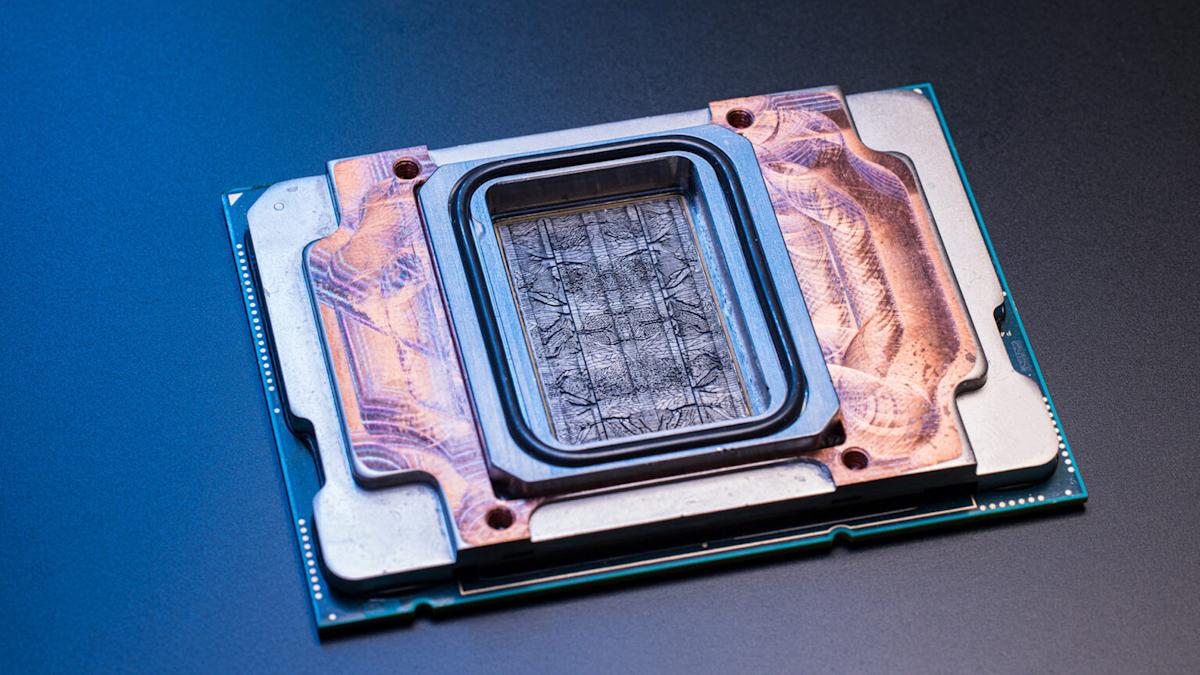Microsoft Announces Breakthrough AI Chip Cooling Technology

Key Points
- Microsoft unveils a micro‑fluidic cooling system for AI chips.
- Coolant flows through etched channels directly on the chip, bringing it closer to the heat source.
- The method claims up to three times better cooling and a 65% reduction in silicon temperature rise.
- Improved cooling could enable higher overclocking margins and tighter server packing.
- Potential for more efficient waste‑heat reuse and modest sustainability gains.
- Design draws inspiration from natural patterns like leaf veins.
- AI is used to optimize coolant flow within the micro‑fluidic channels.
Microsoft says it has achieved a breakthrough in cooling AI processors by using a micro‑fluidic system that channels coolant through tiny etched channels on the chip. The approach, which the company claims can deliver up to three times better cooling and cut silicon temperature rise by roughly 65 percent, could enable higher performance, tighter server packing and modest sustainability gains. Microsoft highlights the potential for more aggressive overclocking, reduced data‑center latency and improved waste‑heat utilization, positioning the innovation as a step toward more efficient AI workloads.
Innovation in Chip Cooling
Microsoft announced a new cooling method for artificial‑intelligence chips that relies on micro‑fluidics, a technique that directs coolant through thread‑like channels etched directly onto the back of a processor. The company says the liquid travels much closer to the heat source than traditional cold‑plate systems, which are separated from the chip by several layers of material. By using AI to optimize the coolant flow, Microsoft claims the design can achieve up to three times better cooling performance than existing approaches.
The prototype reduces the maximum silicon temperature rise inside a GPU by roughly 65 percent, according to the company. This temperature reduction could allow engineers to overclock chips without fearing overheating, and it may let data‑center operators place servers physically closer together, lowering latency and potentially increasing overall compute density.
Potential Impact on Data Centers
Current data‑center cooling relies heavily on cold plates, which, while effective, limit how tightly hardware can be packed because of their thermal inefficiencies. Microsoft’s micro‑fluidic system promises to change that dynamic. By keeping chips cooler, operators could deploy more GPUs per rack, leading to higher performance per square foot. The company also notes that the tighter cooling could enable “higher‑quality” reuse of waste heat, suggesting a path toward more efficient energy utilization.
Beyond performance gains, Microsoft frames the breakthrough as a step toward sustainability. While the primary focus is on speed and efficiency, the reduced heat output and potential for better waste‑heat use are presented as ancillary environmental benefits.
Design Inspiration and Engineering
The etched channels resemble natural patterns such as leaf veins or butterfly wings, reflecting a design philosophy that draws inspiration from nature. This biomimicry, combined with AI‑driven coolant routing, distinguishes Microsoft’s prototype from earlier attempts at chip‑level cooling.
According to the company’s statements, the new system could allow data‑center hardware to operate at higher clock speeds without the risk of melting the silicon, a concern that has traditionally limited overclocking in AI workloads.
Outlook
Microsoft’s announcement positions the micro‑fluidic cooling method as a potential game‑changer for AI hardware, promising performance boosts, denser server configurations, and modest sustainability improvements. While the company emphasizes the technical advantages, it also hints at broader implications for the energy footprint of large‑scale AI training and inference operations.